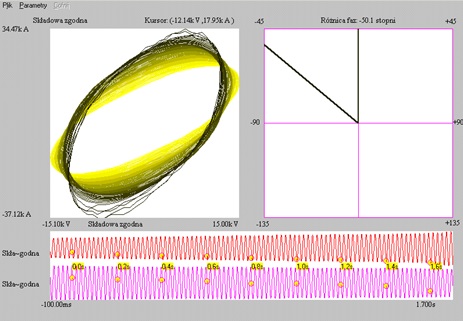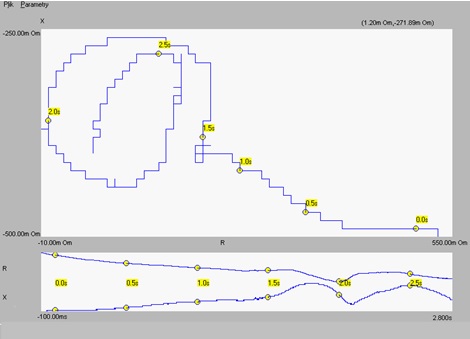Among the many completed projects, two in particular stand out for their scale and functionality:
- Network of SRZ-AMP recorders at Bełchatów Power Plant
- Network of CHARM recorders at the Głogów Copper Smelter and Refinery
Network of SRZ-AMP recorders at Bełchatów Power Plant
The network includes 16 interference recording systems containing from 1 to 8 SRZ-AMP recorders (a total of 93 recorders). Activation of one recorder causes the other recorders of the system to start recording. Thanks to this, the system works as one, extended recorder, simultaneously recording samples of many signals (from 8 to 64 analogues and from 16 to 128 two-states). The hub of each system sends the registration via Ethernet to a separate folder on the corporate network server. In this way, all recordings are available in one place, which facilitates the analysis of time dependencies, interference propagation or the location of the source of interference. Ethernet is also used to synchronize hubs in time by a time server.
Maximum sampling rate of 3200 samples per second.

Network of CHARM recorders at the Głogów Copper Smelter and Refinery
The network includes 6 interference recording systems containing from 2 to 7 CHARM recorders (21 recorders in total). Stimulation of one of the recorders causes the recording by the other recorders in the entire network (this is achieved by propagation of the trigger pulse through the fiber optics connecting all systems). Thanks to this, the network works as a single, extensive recorder, simultaneously recording samples of many signals (138 analog and 87 two-states signals), despite the fact that the distances between individual systems sometimes reach several kilometers. The hub of each system is connected via Ethernet to the Central Computer. In this way, all registrations are saved in the same folder, which makes them easy to process. The program running in the Central Computer analyzes the delivered registrations in accordance with established algorithms, creating standardized reports for the user. In special cases, the reports along with a set of 21 registrations are sent to the corporate network server. Thanks to this, the user is not forced to browse through many registrations to pick out the most important ones, because the initial selection is performed by the Central Computer program.
Maximum sampling rate of 100,000 samples per second.
Analysis program
In both systems, a convenient user tool is an extensive Analysis program for processing the registration that allows you to illustrate interference (harmonic content), dynamics (derivative, presentation of the recording in the form of a film), time dependencies (measurements on the screen, period change graph, phase difference graph) or signal parameters (active and reactive powers, impedances, symmetrical components) and many others

